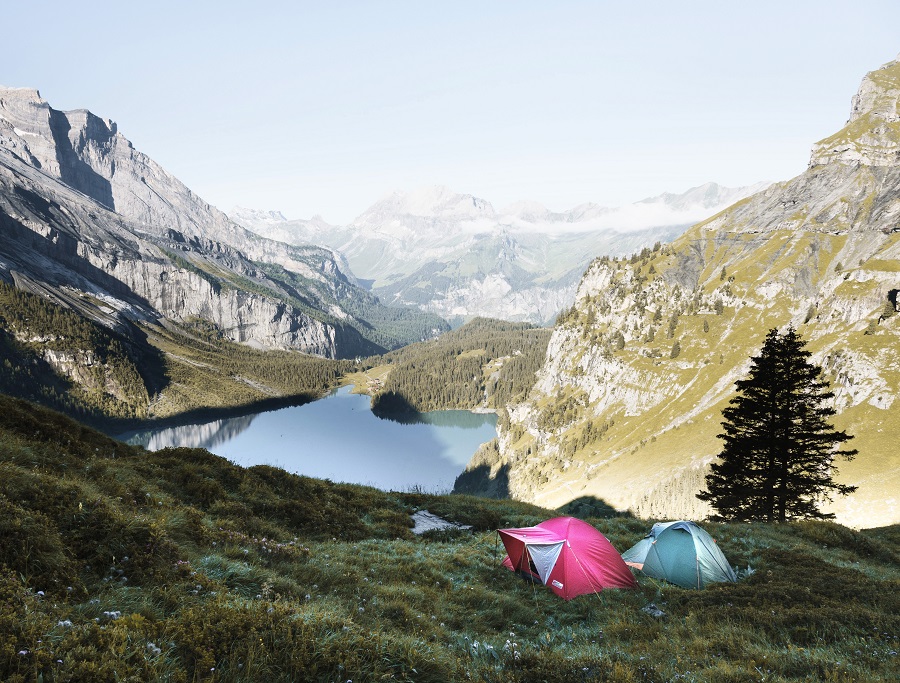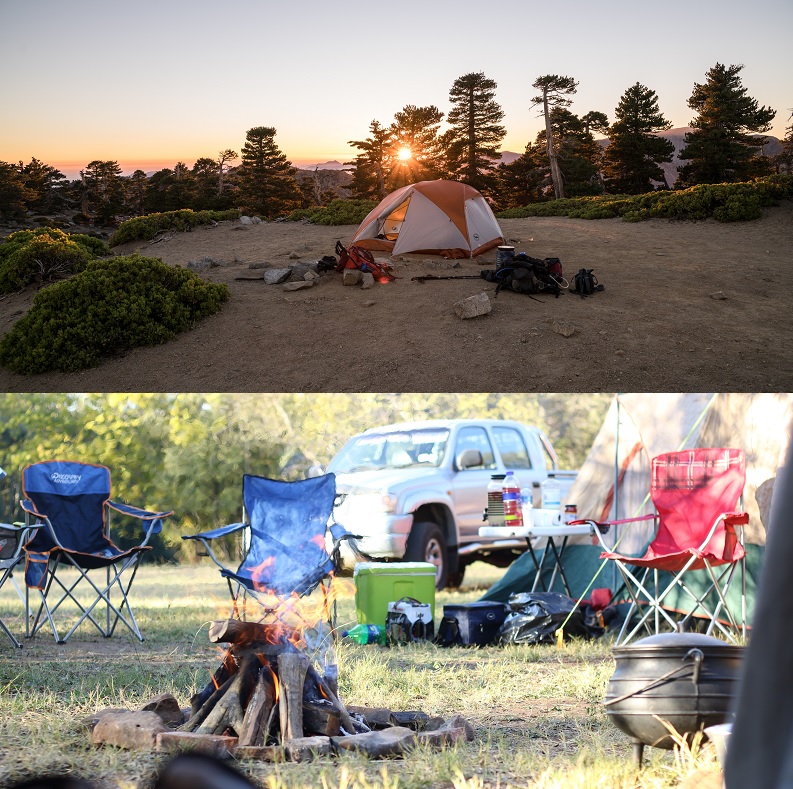While out hiking the other day I got a bit delayed on my way to my designated campsite. It was starting to get dark and I knew I wasn’t going to make it. The beauty about camping is that you can set up just about anywhere, if you know what to look for.
There are some basics that you need to help make sure you have a happy camping experience. As long as your campsite is level, smooth (no jagged rocks or roots) and is near a water source then you should be able to have an enjoyable night in the wild. However, if you have time to plan (unlike me) there are other factors that you may want to consider that will make you camping experience more enjoyable.
Key factors for finding a perfect campsite.
Forward planning
Before we start talking about selecting an actual campsite I first wanted to mention that in some areas you are required to pick up a backcountry permit. During busy times you may also be required to book a slot with the ranger in charge of the area you are visiting. I hope to create a guide for this in the future but for now just doing a quick Google search for what is needed to camp in your area will soon answer that question.
You will want to be at your selected campsite at least 2 hours before dark. The last thing you want to be doing is to be rushing everything and to be feeling around in the dark. Have everything in place before darkness.
Water
The most important factor when selecting a campsite is to make sure you are close to water. You need water for cleaning, drinking and cooking. The last thing you want to be doing is hauling water to you camp.
And lets not forget that it can be nice to take a swim in the morning.
While it is important the be close to the water, you can be too close. Bugs such as mosquitoes live near the water so the closer you are the worse they will be. This will vary depending on your location. Areas exposed to a light breeze will help get rid of some of the bugs.
Aim to be around 200 feet from the waters edge.
Your surroundings
This is another key factor for a comfy experience in the bush.
Look for a flat area where you can pitch your tent. It doesn’t have to be 100% flat but the flatter it is then the better sleep you will have. If you pitch on a slop then you sleeping bag will likely slip to the bottom of the tent while you sleep. I have outlined some solutions for this in this post.
Make sure you are not in a “dish”. Will water collect around your camp or flow through if it rains?
Make sure you are not pitching your tent on jagged objects. If you’re camping it a wooded area these objects can be hidden under leaves. Scan the area where you intend on placing your tent. Remove any small stones but if there are roots stick up then leave them alone. Pick a different spot.
In most cases, there will be signs of other campers that have been there before you. In these places pitch the tent where they had theirs. It’s a good bet that they would have removed any unwanted debris.
If possible, aim you tent to the east. This will give you sun in the morning as you climb out of your tent. A great way to start the day.
If you are camping on a beach make sure you are above the tide line. Same goes for lake shore or riverbank. Make sure you are high enough to allow for rising water levels. Is your area prone to flash floods?
Have a look around for potential hazards. Are there dead branches dangling over your campsite? If you’re camping near the bottom of a cliff or steep hill are there signs of rockfall?
If you can find somewhere that has all of the above but also has a few boulders, downed trees or low branches then these can be used as ready made chairs and tables.
Be mindful of wildlife.
Is there a beaten trail running through the chosen campsite that is not made by human? These are the highways for wildlife in the area. Try not to disrupt the wildlife on any camping trip.
If you are in bear country then you don’t want to store or cook your food in your camp. The common practice is to hang your food in a sealed bag from a tree about 100 yards from your camp. Hanging it from a tree prevents the bear from getting to it.
Camping near fruit bushes may sound like an ideal spot but if there are bears around then it is best to move on. Bears love to forage for berries.
Stay out of sight.
When picking a camping spot be mindful of other people. Don’t block other people’s view and don’t camp too close to people. The general rule I like to use is if you can hear them talking and know what they are saying while they are at their campsite then you are too close. Of course, this doesn’t apply to campgrounds.
Another reason to stay out of sight is for security. The more people that can see your campsite then the more likely things might go walking off when you’re out of camp. And when we are on the subject of security, don’t take anything of value that you will have to leave in your tent while you are gone from camp. It will niggle at you that it may not be safe and it will take away from what you are trying to experience. If you are concerned about the security of your camp this read my post I wrote on camp security.
Weather
The weather will play a major roll on your camping experience. Check the weather forecast before packing and plan accordingly.
Seek the high ground.
If you are camping in a valley or canyon try to find a spot on high ground. Overnight, cold air will actually fall to the bottom of these areas.
Shelter
In windy weather camp near larger object such as rocks or trees. They will provide additional selter from the wind. Watching for the potential hazards mentioned above will be doubly important in gusty conditions.
The sun can be hard on tents. Direct prolonged exposure to the sun can actually damage the nylon material that most tents are made from. It can also make the inside of a tent unbearably hot during the day.
While camping in a forest you should be able to find shelter under the canopy of trees however if you are exposed, like on a beach then I advise using a tarp to shade your tent from the sun’s rays.
Failing both of these you can also let the tent down by removing the support polls but leaving the pegs in place. This won’t allow hot air to build up inside your tent and when you come back from your day out all you have to do is to pop the supports back in. I’ve made a post on ways to keep your tent cool here.
If you are going to encounter rainy conditions then pack extra clothes and keep them in a waterproof bag. Having a tarp over your tent and extending out the front is ideal for rainy conditions. Firstly having a tarp over your tent will reduce to noise of the rain. It will also protect your tent. And secondly, having a porch in rainy weather is essential if you want to get out of your tent and stay dry. It also give you somewhere to stand or sit while so that you can prepare food or play games. Check out my post on how you can actually enjoy camp during the rain.
So that’s how you select the perfect campsite in backcountry. I hope this helps you on your next camp and remember to always leave no trace.
If you have found this article helpful then please remember to share by clicking on one of the buttons below. It will help others find this article too.
Links from the post above;
Stop slipping off sleeping bag link here
How to secure your campsite post link here



